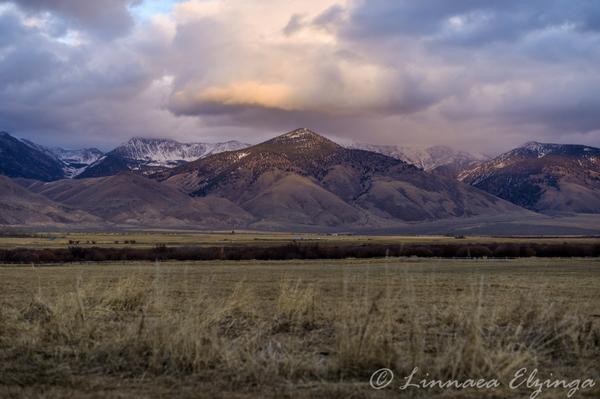
It was the weekend before Thanksgiving Day. Winter had already staked claim on the country, but we had to ride.
Thirteen-year-old Melanie and I left the woodstove warmth of our cozy kitchen after a breakfast washed down with hot coffee. In the mudroom, we put on silk scarves and oilskin slickers over wool and leather to ready for whatever winter winds would dish out on the high ranges. At this time of year, the right kind of clothing serves as a boundary between life and death, and the gear we use is chosen carefully.
Snow spit in our faces in the pre-dawn black as we headed to the barn. Jess and Josiah were already there, getting their horses tacked up under the dim light bulbs that illuminated the tack room corner. Border pups wagged a welcome as we came into the light. In a few minutes, we had our own horses caught from the corrals outside and led them to the far end of the long barn to join the others.
The horses had been eating much of the night. I’m sure they knew that there was work ahead of them when we caught them in the big pastures the day before and corralled them overnight. They had done this before.
We groomed them, cleaning any hay or frozen mud from their manes, backs and tails. I enjoyed this part; my buckskin mare’s light leather colored coat was dense and luxuriant with a newly grown winter thickness; I knew that she would keep my center mass warm, despite layers of leather and blanket between us. I ran my fingertips through her thick hair as I ran the currycomb alongside. The change of daylength and the accompanying drop in temperature had singled it was time, and her body had unconsciously prepared for the subzero days to come.
The last thing in the dim light of barn: their feet. Systematically, we picked up each. Jess had welded little dots of carbide alloy to the horseshoes before we nailed them to their hooves. We needed to ensure that the dots were holding, and the shoes were still well clinched. There would be icy spots on the trail to negotiate, and even a few frozen creeks to cross. Without these hardfaced caulks (pronounced “corksâ€), a horse could easily go down at this time of year, in very remote and broken country.
And that could leave both the rider and horse in a position of potential peril. Today’s forecast of single digits would be followed with subzero as soon as the weak winter sun went down. Hypothermia could set in on an injured rider in minutes. It’s why we always traveled in twos this late in the fall. There was no cell service, and we would be 20 miles from the nearest good road.
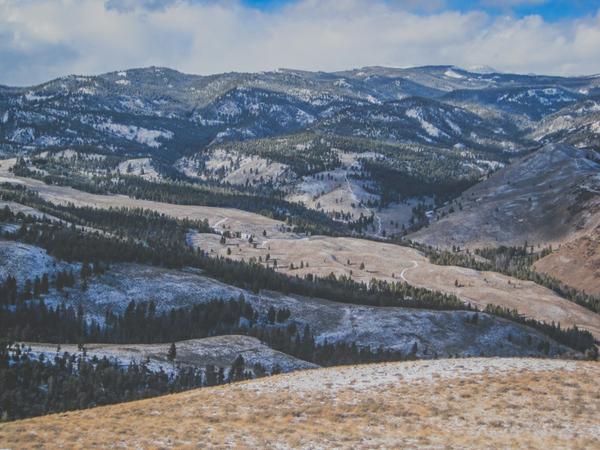
We stepped through the sliding door out into the barnyard under the floodlight and led them out to the ancient blue stock trailer. Four horses would be tight in there, but they would have the collective advantage of thermal mass and warmth in there due to the tight fit. It had an open top, and I made a mental note that we would have to drive slowly if it continued to snow so that it wouldn’t pelt their faces unnecessarily as they faced the wind.
Snow blanketed the road with a thin sheet of wispy white feathering as we drove down the valley to the Hat Creek Range. It would only take an hour or so to negotiate the two-track up to Little Hat Ranch; by then, it would be full-on daylight. Snow fluttered in the beams of our headlights, and we met no other wayfarers on the main road down the valley. The warm glow of lit windows spilled from cozy cabins on other ranches as we made our way down. Now, in the gray-blue of predawn, it was light enough to see woodsmoke columns curling up from each stovepipe.
And that the entire valley had been dusted white.
We crossed the ice-pocked Salmon River on the single lane bridge at Deer Gulch, and worked our way up the slow haul through foothills to our other remote ranch holding. In another half hour, we reached the corrals at Little Hat Ranch without incident. Thankfully, the snow was no deeper at Little Hat Summit on the way; accumulation is usually deeper at higher elevations. We didn’t even have to chain up our four-wheel-drive.
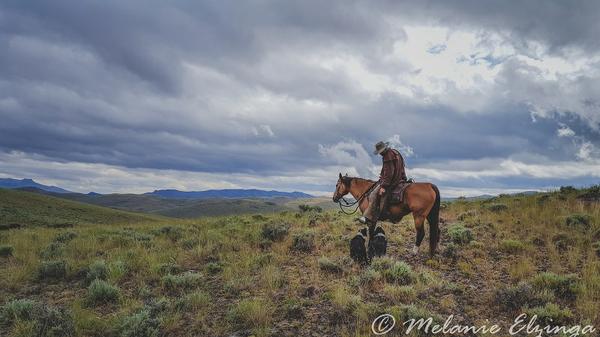
The horses acted eager when I stepped out of the truck, and were ready to unload in the chill. Ice crystal fog formed from their wide-open nostrils and off their wet backs, as they inhaled deeply of the rich wet sage pungence that filled the dense morning air. My big buckskin mare, Ginger, mysteriously started bucking the moment I backed her out of the trailer. She jerked the halter rope from my hands, and went on for ten or fifteen seconds, stirrups whacking against her sides, as she reared and bucked alternatively. We all dropped what we were doing and watched a little open mouthed as she went through the paces of her performance.
So did her cayuse friends. They all looked a little wide-eyed as their peer pitched and rolled.
But, as soon as it started, it stopped. She took a big sigh, exhaling slowly, and stood, resting as I walked back up to her, carefully, quietly putting hand on halter rope and stroking hide as I checked her gear.
I turned to see Melanie, bent over, laughing. “What the heck was that all about?â€
“I have no idea.†I smiled as I turned back, and spoke to the mare with softly uttered words.
I checked saddle, cinch and under blanket; all looked well. I slipped a bosal over her head, exchanging it for the halter, then swung a leg over and quickly stirruped up, in case she decided to do another dance with me on her back.
Nothing.
The four of us made a plan to split up. Since turning all the cows loose on the mountains again about a month ago, after weaning calves on Little Hat Ranch, we were missing about 6 head of mother cows out of nearly 200. It would be easy to pick them up if we could cut some tracks in the new snow. I sent Jess and Josiah off up to the upper Larkspur Tablelands. There was a patch of pine forest up there that I thought the cows could have holed up in with the change in weather. Melanie and I would hit the lower Tablelands, and Park Creek Canyon. We had some walkie-talkies with us that would keep contact, provided both teams were on the ridges. We agreed to be back at the rig by dark even if we hadn’t found anything.
We set out on our respective trails. Each team would be canyon bound for most of the morning, as we climbed ever higher a few thousand feet up to the volcanic plateau we called the Tablelands. The deep draws we picked our way up had good potential for cattle. Springs lined the extensive andesitic breaks along the canyon walls and cows could easily congregate near one around warm water and cover. We would have to check each of the seeps.
It seems that when winter hits, the range feels bigger than even the 70 square miles it already is. It’s not like we expect to see anyone up there in any season, but it feels more remote and foreboding in the winter. Maybe it’s because the cold and short daylength allow for no mistakes; perhaps it is the lack of life that we are used to: grasses are browned, and the thick willows, characteristically alive with birdsong in spring and summer, are gray and leafless.
And silent. So silent.
We find that we don’t talk much, and when we do, it’s in whispered fits and starts. Unuttered and unfinished thoughts dangle behind us in the thick air, like water vapor from our horse’s backs.
The canyon begins to open up as we near the Tablelands. We unbed a band of cow elk in the curve of creek; they rise, and jostle across the low black barked sage, ghostlike into the flurrying snow. They break the horizon where ridge meets sky, silhouetted for a second, and then they are gone.
As we break out into the big open of the plateau, Melanie picks out two minute dots, moving almost imperceptibly upward in the black and white landscape of the upper table. It is Jess and Josiah, high above us. I decide to raise them on the handheld, and risk awkwardly breaking the reverent silence.
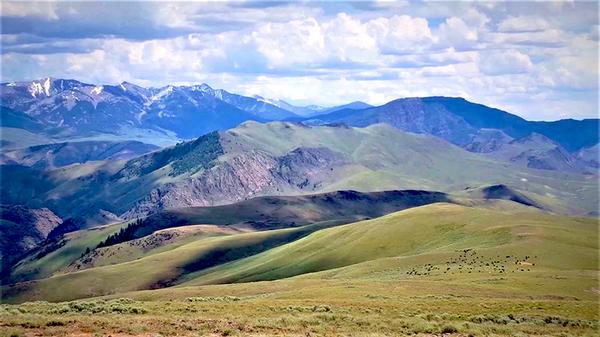
I pull the radio from my saddlebag, and key the mic. “Do you guys copy?â€
In a moment, Jess answers with a static crackle. “Sure do.â€
“See anything? Cut any tracks?â€
“No cow tracks.†Jess pauses, and static fills the void. He starts again: “Just a very heavily used trail of fresh wolf tracks. They seem to be working this ridge pretty hard. Do you want us to keep going to the timber? I’m guessing these wolves are denning up there.â€
“Yeah, I guess I do. I just need to close the possibility of any cows in there, especially now with the big dog tracks.â€
“Copy that.†More walkie talkie crackle.
“I think we’re gonna lose you when we drop off the edge of the table into North Fork.†I pause to let that sink in. “Be careful up there. And we’ll just plan on meeting you at the corrals.â€
“10-4. You guys ride safe,†Jess counters.
Melanie and I pause on the ridge above the North Fork of Park. From here, we can see the spread of the lonely basin. We scope it out carefully from the high ridge of where we are, looking for cows. It’s a good vantage point, but we can’t see through the dense willow and aspen stands that cloak the bottoms below us.
It’s the remote haunt of Where the Wild Things Are. There’s plenty of life down there: Elk. Bears. Lions. Deer. Wolves. Our cows rarely venture into that drainage. I can count on one hand the amount of cattle I’ve found down there over years. I also considered the occasional piles of bleached bovine bones cleaned by canine teeth that I’ve found in the basin in times I’ve ridden horseback across it.
But we were duty bound to check the North Fork of Park. It was part of our circuit, and we would be methodical about our search in the high country. It was time to get these cows back to headquarters; deep snow could hit the mountains at any time, and a cow could easily get stranded in a place of heavy snow, hemmed in by frozen creek ice. Cows won’t often cross ice, and would rather take the risk of surviving in the middle of nowhere, surrounded by willing wolves that would make easy meat out of her.
It’s not to say it hasn’t happened where a cow made it through the trials of winter. It can happen.
Just the year before, neighbor cowboy Jim Martiny telephoned me in March. “So Glenn; I hope your winter’s gone well. Hey, I was up in your Hat Creek scoping the country out for wolf sign, and I run across an old black cow with a yearling calf in the bottoms of Hat Creek. She’s got your mark on her, and I got to tell you, I don’t know how she made it, but there she was, baby on her side, fat and happy!â€
And I’d given up her for dead, the fall before.
At some time, you just got to quit looking. It gets hard on crew and horse, after all. The later you look for the lost, the more risk you have in looking.
We started to pick our way down the wretchedly rocky trail into North Fork of Park. Both of us dismounted when the elk trail became indistinct in the slippery ice crusted cobble. I was thankful for hardfaced shoes.
But the treacherous trail was all in vain. As I suspected, when we arrived in the tight valley bottom, we found no cow sign, but some signature of every other occupant of hill and vale. Plentiful tracks of all kinds of wildlife created worn travel ways in the bottoms, and we picked the best trails as we worked our way down the drainage. We passed frozen waterfalls, and pristine and lovely six-foot tall stands of basin wildrye grass, quietly waving in the occasional snow flurry breezes. And we kept our eye out for the Prohibition whiskey rumored to be in this drainage.
The sun, though hidden by slate grey clouds, was clearly on the way out. Still no cows. The temperature was dropping too, and a chill breeze that cut through silk and slicker helped us feel that fact. We were almost around the big circle of country that Melanie and I had charted—it was about a 15 mile ride, and we were on the tip of upper Little Hat Ranch. It was all downhill over rolling waves of sagebush to that isolated oasis of lush creek bottoms surrounding the bubble and curve of Little Hat Creek itself. As we came upon the tall riparian brush in the gathering gloom of a short day dusk, a black shadow moved.
And then, another.
They were all there, in the shelter of dense birch and willow. Six black Angus cows, contentedly grazing the rich bottoms. And as they saw us coming, they raised their heads up in recognition like they had been waiting for us.
They knew it was time, and we guided them safely home.
Somehow, despite our travails and stress, causing the occasional night punctuated by worried wanderings from bed, it all works out. Each year, we finish the season in gratitude for the good gifts the land has given us and what we have learned about life there-the plants and the animals–and what we have learned about ourselves in the process.
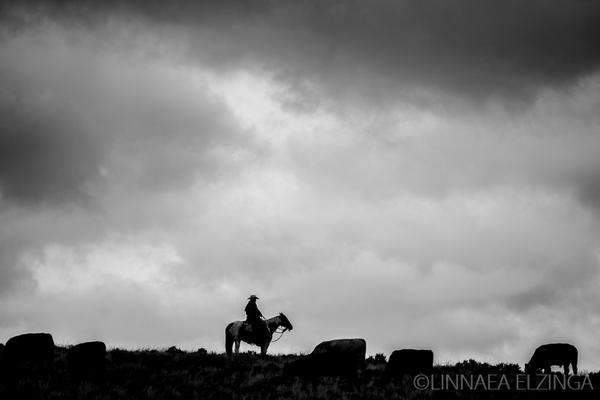 This year was no exception, with the specter of wildfire close at hand, burning proximal to our crews and cattle. We lost only some grass in the fire, but came away with all our beeves, cowhands and horses safe. We even managed to retrieve the old blue pickup relatively unscathed after the fire passed by. We are grateful.
This year was no exception, with the specter of wildfire close at hand, burning proximal to our crews and cattle. We lost only some grass in the fire, but came away with all our beeves, cowhands and horses safe. We even managed to retrieve the old blue pickup relatively unscathed after the fire passed by. We are grateful.
There’s a song I grew up singing at Thanksgiving, surrounded by my parent’s friends, many of whom had, like them, survived World War II in Holland and immigrated to a new country after the war. They were grateful. It is a good song for us too. It’s been a challenging year, with heat, extreme weather and fire, not to mention the usual stresses of the mechanics of what we do: har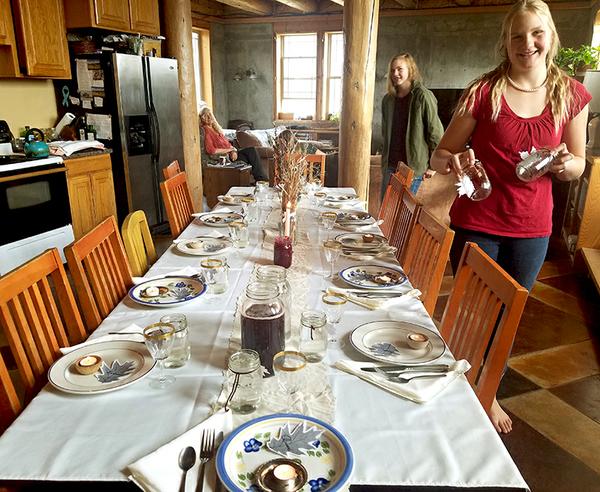 vesting excellent protein and serving it directly to great people. But again, we have prevailed, and we are grateful.
vesting excellent protein and serving it directly to great people. But again, we have prevailed, and we are grateful.
We are about to sing the song at our own Thanksgiving table, as I finish writing this tome. It’s part of our Thankgiving tradition too. We’ll gather around, family and cowhands, and reflect on the bounty and goodness of 2018.
Come, ye thankful people come; Raise the song of harvest home.
All is safely gathered in; Ere the winter’s storm begin.
God, our maker doth provide; For our wants to be supplied;
Come, ye thankful people come; Raise the song of harvest home.
I’m hoping you all have had a lovely Thanksgiving, despite Black Friday’s attempts at ruining it. We stand truly grateful for the land, the animals on it, and the people like you that partner with us in our endeavors. We stand in heartfelt gratitude to you all.
Happy Trails.
Glenn, Caryl, Girls and Cowhands at Alderspring.

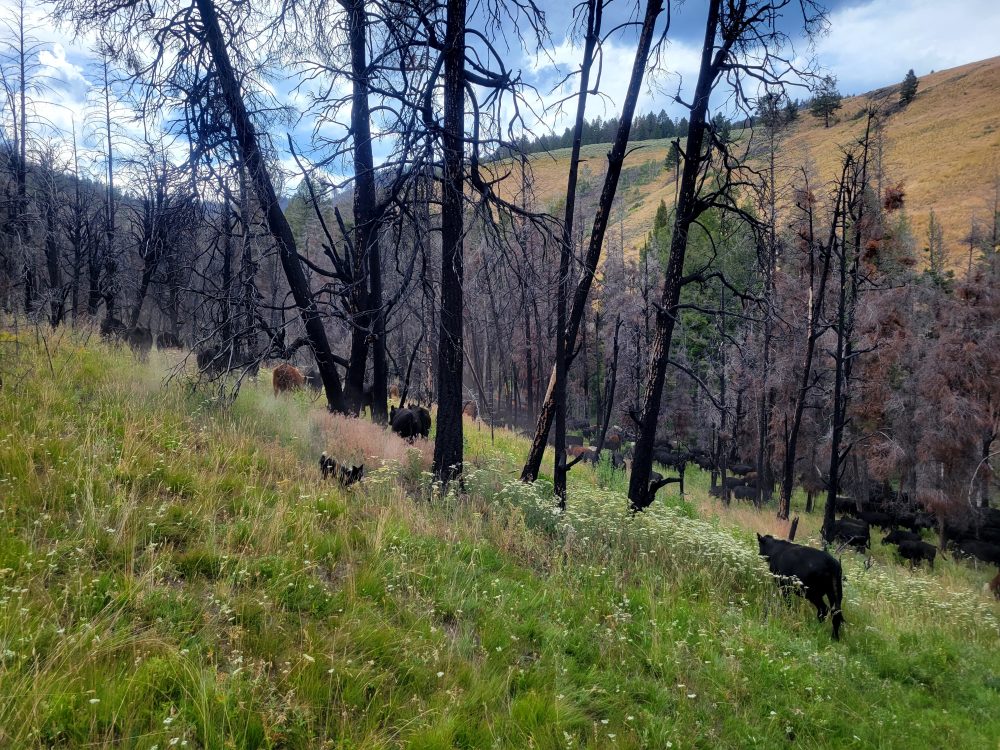
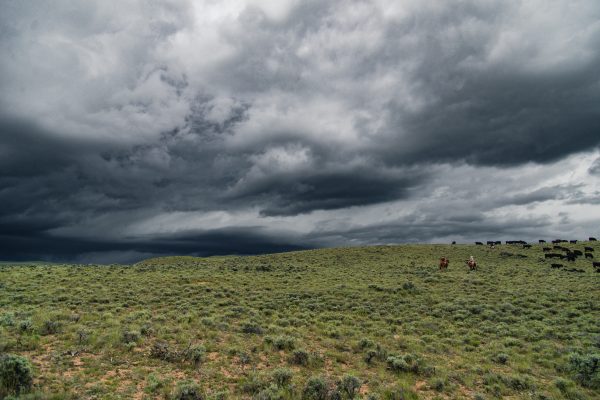
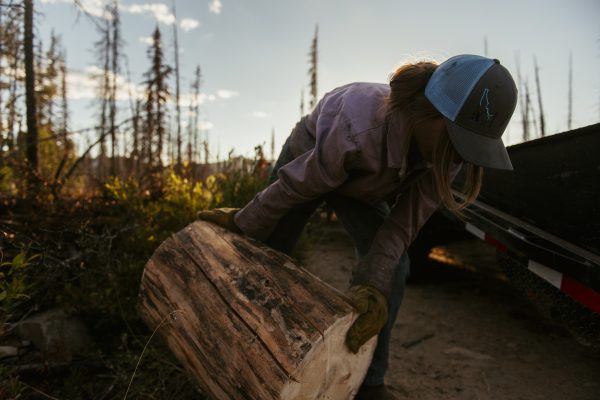

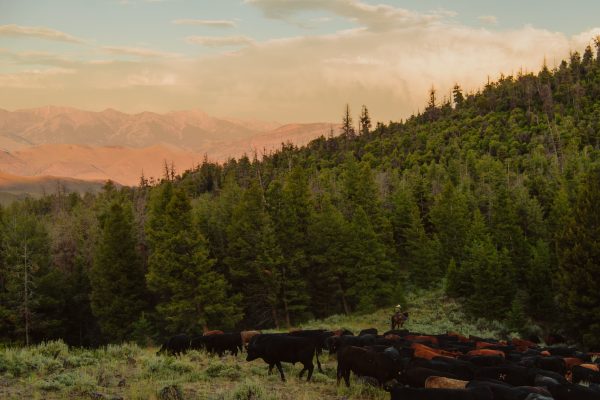
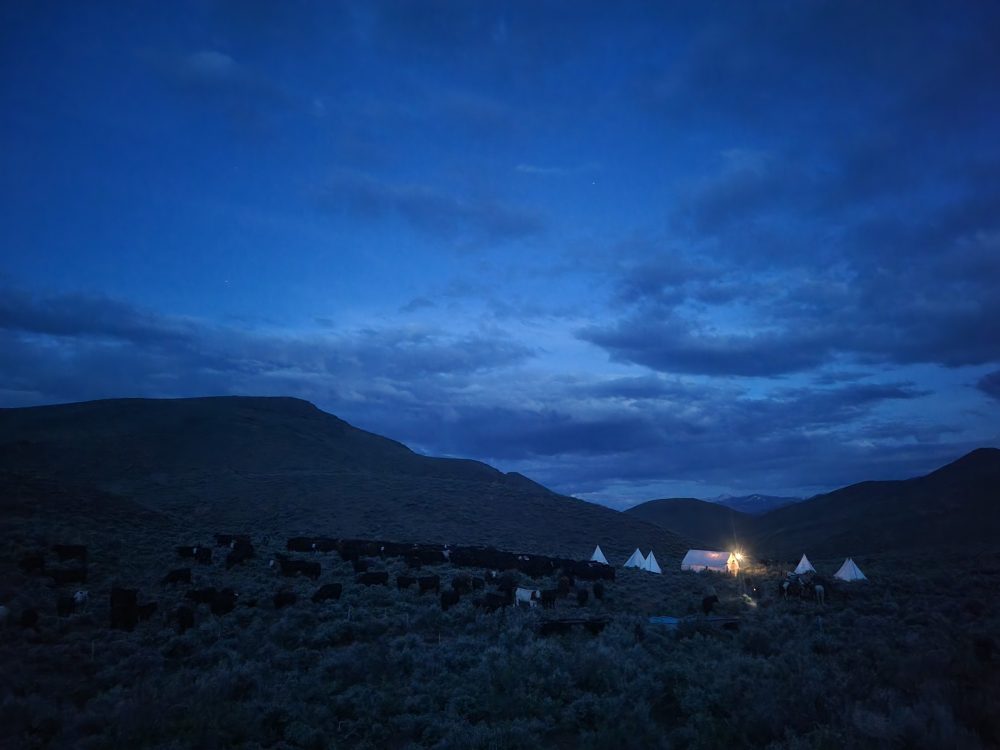
Susanne
Thank you for your true stewardship!
Susanne
Tanya Hecker
Outstanding writing! Really enjoyed reading about your adventures on the land.
Robin Poupard
Love your stories. So glad you found all six! Happy Thanksgiving and Merry Christmas!
Leo Younger
I quit local turkey and chicken meat long ago, and had to quit local certified 100% pastured organic eggs when the farmer switched the supplemental feed from wheat-based to corn- and soy-based. I knew immediately, due to the pain of inflammation in my right knee, that the chicken feed had changed. I asked the farmer’s employee at the farmers market to ask the owner about a change in feed, and her cell call confirmed my suspicion. Your beef muscle, fat, organs, and bone are my major source of nutrition, with some other occasional choices from your store. Thanksgiving was no exception. Thank you all who provide us customers with excellent products, and thank you to all the customers who keep Alderspring working.
Shirley
What happened to Josiah and Jess? I’m hoping they made it back without problems!
Leslie Conner-maiyo
So appreciate all you do. Erica and I rode the BackCountry in the hills and mountains of Los Padres NF growing up in Santa Ynez.
We both agreed that in another time we would have worked on your ranch…we were so hooked on it! Love all you do and the food you produce!
Cindy Salo
Thanks for your discussion of freeze branding. We also freeze brand. Easy peasy lemon squeezy. Nobody gets stressed–including us.
Curt
Nice essay
Susan Bolgiano
I enjoy reading your stories and seeing what is available. However, I have not had an email with a story since November 24. I do get the emails for what’s available in the store.
Could you look into this for me. I’d also like to get the last two weeks of the stories I have missed.
Thank you and Happy Holidays.